
All categories
Featured selections
Trade Assurance
Buyer Central
Help Center
Get the app
Become a supplier

(1899 products available)




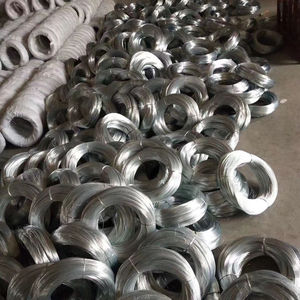



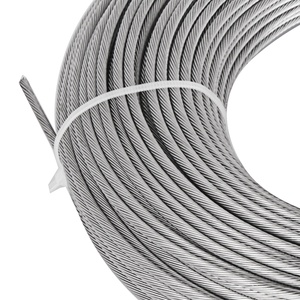

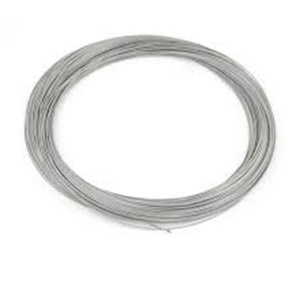

















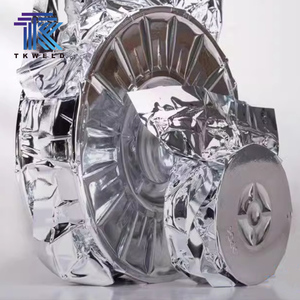
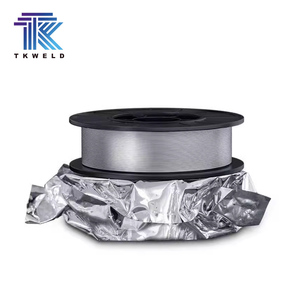









Stainless steel flux cored wire is offered in numerous types. These types are:
S-FC wire
S-FC stainless flux cored wire is developed to provide good impact properties at low temperatures. Usually, it's used in construction applications that expose the structures to low temperatures. The wire is majorly applied in welding stainless steels where good toughness is needed in the joints.
Dual shielding flux cored wire
This type of wire utilizes both gas and flux for shielding. Normally, it offers the benefits of better cleanliness and penetration. Additionally, it is adaptable for a variety of welding conditions. Often, it's ideal for heavy sections or joints where deep penetration is necessary.
SF wire
SF wire is created for welding hardenable stainless steel. Normally, it offers good strength and wear resistance. Ideally, it's used in applications that require these specific properties. Usually, it is applied in fossil power plants, heat exchangers, and pumps.
C-FC wire
C-FC wire is designed specifically to work well in low currents. Usually, it makes it suitable for welding that is performed in a short-circuit transfer mode. Moreover, it is essential in control applications where heat input should be minimized. This is to prevent distortion.
Metal-cored wire
M-C stainless steel flux cored wire combines flux with a metal core. Usually, it provides a stable arc and good deposition rates. Also, it is used in high-efficiency welding. Commonly, it is preferred in industries that require fast fill with good productivity.
Stainless steel flux cored wire has numerous industrial applications. They include:
Oil and Gas Industry
This wire plays a crucial role in the welding of pipelines, drilling rigs, and refining equipment in this industry. Usually, it provides the required resistance to corrosion. This is particularly in sour environments that have hydrogen sulfide exposure. Also, the wire enables the fabrication of durable structures that endure harsh weather and chemical environments.
Chemical Processing
In this industry, they regularly encounter corrosive chemicals and extreme temperatures. Therefore, cored wire for flux is indispensable when fabricating reactors, tanks, and heat exchangers. Additionally, it ensures welds last longer and are reliable under adverse conditions, hence improving the overall safety and longevity of equipment.
Aerospace
In the aerospace industry, weight reduction is critical. This is due to most flying machinery requiring lightweight but strong materials. Also, stainless steel flux cored wire is used to weld components in such systems. Normally, it offers an optimal balance between strength, corrosion resistance, and heat endurance. Therefore, making it ideal for challenging environments like outer space.
Marine Applications
Corrosion resistance is a prime concern in marine environments. In these settings, stainless steel flux cored wire is commonly utilized. Mostly, it's in the fabrication and repair of ships, boats, and offshore structures. Moreover, it ensures welds withstand saltwater exposure. This, therefore, improves the durability of maritime equipment and structures.
Food and Beverage industry
This industry requires stringent hygiene standards. Therefore, this wire is used to weld stainless steel equipment like tanks, pipelines, and conveyers. Ideally, welding creates smooth, corrosion-resistant surfaces that are easy to clean. This guarantees the contamination prevention of food and beverages.
Biomedical field
Stainless steel welding rods are useful in this field. They help create biomedical devices like surgical instruments and implants. Normally, the wire's biocompatibility and corrosion resistance make it suitable for such high-stakes applications. Therefore, ensuring the devices are safe and last long in the human body.
The following factors affect the durability and suitability of stainless steel flux cored wire:
Corrosion Resistance
Stainless steel flux cored wire has good chemical resistance. This is due to its alloying elements, mainly nickel and chromium. These elements form a protective layer of chromium oxide on the wire surface. Often, this layer acts as a barrier to rust and corrosion. Additionally, stainless steel wires have improved resistance to moisture, heat, and chemicals. These effects are particularly visible in the marine and chemical industries.
Heat resistance
Chromium and nickel are significant contributors to the heat resistance of stainless steel flux cored wire. Sometimes, when exposed to high temperatures, these elements help maintain the wire's structural integrity. Therefore, preventing the formation of undesirable carbide precipitates that can weaken welds. This makes it ideal in industries like aerospace and oil and gas.
Mechanical properties
Stainless steel wire has enhanced tensile strength and toughness. Usually, this ensures the welded joints can endure high mechanical loads without cracking or deforming. Often, the wire's ability to perform under stress contributes to its suitability in heavy-duty applications.
Flux composition
The flux composition within the cored wire significantly influences the weld quality. Usually, a well-formulated flux provides excellent deoxidization and slag control. In addition, it protects the molten weld pool from contamination, this is critical in maintaining weld integrity. Therefore, ensuring proper fusion and penetration. Also, the flux characteristics affect the wire's performance in various shielding gases. This makes it adaptable to different welding conditions.
Wire diameter
Wire diameter selection impacts both weld bead appearance and deposition rates. Usually, thicker wires are ideal for large-scale industrial projects requiring faster deposition. On the flip side, thinner wires offer greater control in delicate applications. In these cases, precision is critical. Moreover, the wire diameter must fit the equipment and settings used. This, ensures optimal performance and consistency.
Here are some important points to note when choosing stainless steel flux cored wire:
Type of material
The stainless steel flux-cored wire to be acquired should be compatible with the base materials that will be welded. Normally, different wire grades are suitable for various stainless steel types. These include austenitic, ferritic, and duplex. Ideally, the selected wire should match the specific alloy of the stainless steel in use. This ensures corrosion resistance and mechanical property maintenance.
Wire diameter
The wire diameter should be compatible with the thickness of the materials to be welded. Normally, thinner wires are ideal for thin sections. They provide more control over the heat input. Conversely, in thicker materials, wider diameter wires are more suitable since they manage better penetration and fusion.
Flux formulation
The flux formulation is a key factor that influences weld quality. Usually, flux cored wire contains an ideal flux that provides slag control, shielding, and deoxidization. This helps in preventing oxidation and contamination. Therefore, the wire's flux should be chosen based on the specific application requirements. This will ensure the desired weld characteristics and performance are achieved.
Welding position
The stainless steel flux cored wire's viscosity and fluidity will determine its suitability in different welding positions. Normally, some wires are formulated for better ease in vertical or overhead applications. Therefore, others may be more suitable for flat or horizontal positions. Go for wires that allow easy handling during the specific positions that will be utilized.
Penetration and bead appearance
The wire needs to be formulated with a flux that will offer ideal control over bead appearance. This ensures they have smooth and visually appealing finishes. Moreover, the wire should also offer ideal penetration. This will ensure it creates consistent and strong joints. Therefore, good bead appearance and penetration are key for projects that require both aesthetic and structural integrity reasons.
To store stainless steel flux-cored wire, keep it in a dry, controlled environment that is free from moisture and extreme temperatures. It is advisable to store the wire indoors since humidity can cause the wire to corrode. Further, use the original packaging or a protective container to guard against dust and mechanical damage. Occasionally, inspect the wire for signs of rust or corrosion before use. This ensures the wire will perform well when needed.
Unfortunately, people who carry out maintenance work frequently go against the ideal practices. They do things that are not recommended. One such practice that they do is exposing the wire to moisture and humidity. Some go as far as deliberately leaving them in unprotected conditions. This forgetting that such act leads to corrosion and contamination risk. Also, they neglect regular inspections. This means they go on with the use of damaged or worn wires. Worst of all, some people use incompatible equipment with the wire. This results in additional wear and tear.
An ideal welder machine that is compatible with stainless steel flux-cored wire should have a sufficient input power. The machine needs to provide the required arc stability and control. This is regardless of the welding position. Moreover, it should effectively manage wire feeding. This will ensure consistent performance under industrial applications' demanding conditions.
There is a difference between the two. For instance, flux-cored wire has a core filled with flux. This helps in creating a shielding gas that protects the weld pool. On the flipside, solid wire requires external shielding gas. Also, cored wire is more forgiving in windy conditions and out-of-position welding. This is unlike solid wire.